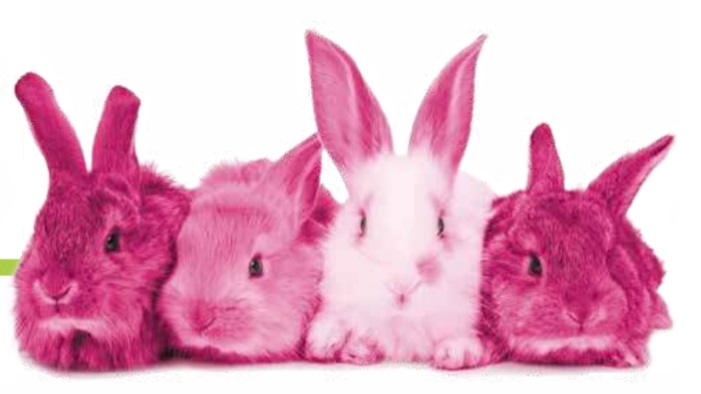MUSE readers realize pretty much straight away that the magazine’s unofficial mascot is the hot pink bunny, or HPB. Much has been said and written about the HPBs, especially in the popular MUSE Mail section. According to fans, they live inside the “Fan Mail Pit” where rejected mail is laid to rest but occasionally escape and wreak havoc on the magazine (like in the 2017 April Fool’s issue). It’s been said that they glow during phases of the moon, that they eat fan mail and human souls, that they migrated to Earth from the planet Pirikold, and much, much more.

We’ve even received letters from a purported representative of a HPB rights organization, a hot pink bunny geneticist, a HPB historian, AND the president of the Intergalactic Organization of Hot Pink Bunny Hunters. It’s an inside joke that’s been going on for so long that most fans don’t even know how the HPBs hopped on to the pages of the magazine in the first place.
To discover the true answer, we turn to the Dark Ages, the very dawn of recorded time, before the birth of emojis as we know them: 2002. With the help of ancient texts, a helpful fan letter in the May/June 2017 MUSE, and memories of Cricket Media staff (at least one of whom were actually MUSE readers in 2002), we’ve managed to piece together the truth.
You’d think that this would placate the MUSE readers. But if you thought that, you’d be underestimating the passion, tenacity, and borderline obsessiveness of MUSE readers. Letters debating the merits of cats versus dogs flooded in, with fans of each pet fighting like, well, cats and dogs.
It all started normally enough, with fan letters demanding issues about their favorite topics. The most popular of these requests were cats and dogs. A Cat Counter was set up to tabulate letters begging for a cat issue, followed shortly by a Dog Counter. At one point, the ‘machine’ malfunctioned and exploded from trying to count too many cat and dog requests.
Finally, MUSE conceded to the overwhelming roar (or meow, or woof) of the crowd and published a cat issue and then, two months later, a dog issue.
Something had to be done, so the editors banned discussion of the topics, choosing to discard letters about them into the FMP. But what about letters that only briefly mentioned cats or dogs? Editors replaced the offending line with a row of cute hot pink bunny faces. Fans immediately fell in love with the little guys, and the myth surrounding the HPBs grew from there.
“It’s hard to pick what charms me the most about the hot pink bunnies, but I think it’s the way this silly and slightly offhand detail has, over the years, spiraled into some of the smartest, strangest, and most inventive fan fic around. In fact, the HPBs help showcase our readers as the intellectual and imaginative co-creators of MUSE they are. Their sense of community, their playfulness, their fierce intelligence: it’s all on display in reader interactions around the mysterious HPBs.”
Johanna Arnone, Editor of MUSE Magazine

To read more about the HPB phenomenon, check out Paul Baker’s eccentric Elizabethan history of the incident, “A Surfeit of Coneys,” from the September 2005 MUSE.
If you know kids who are boundlessly curious and filled with fun facts and extremely random humor, introduce them to MUSE Magazine!




